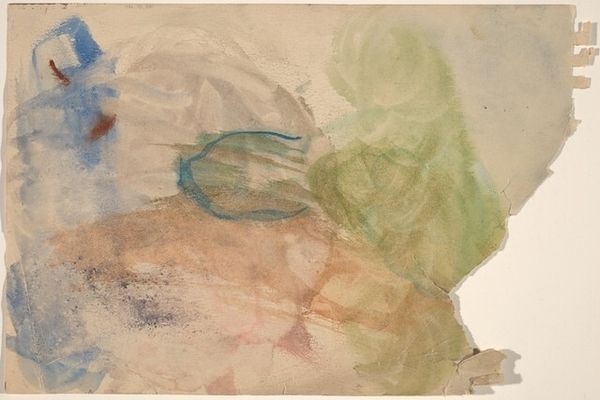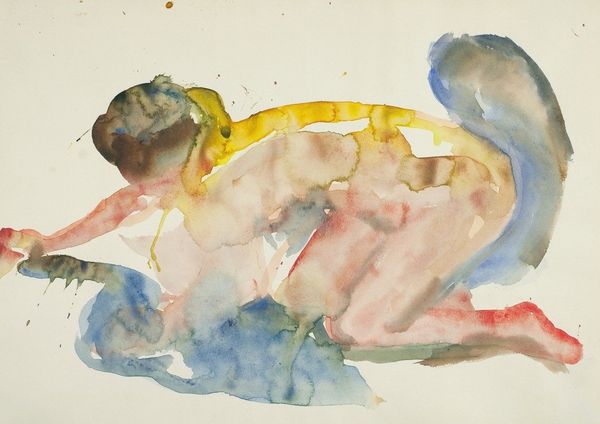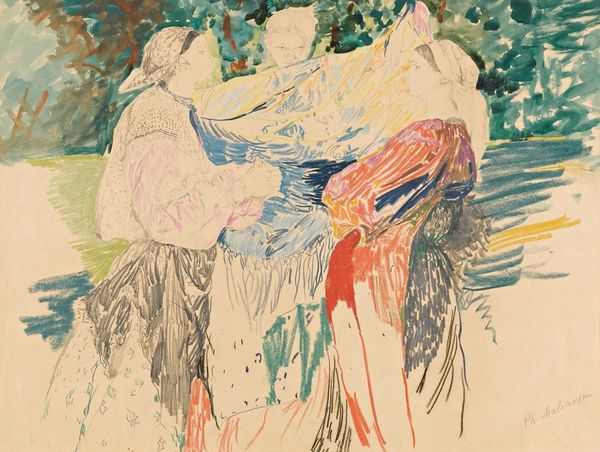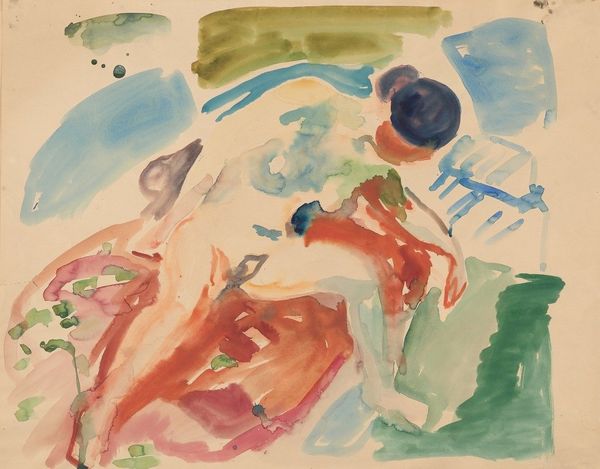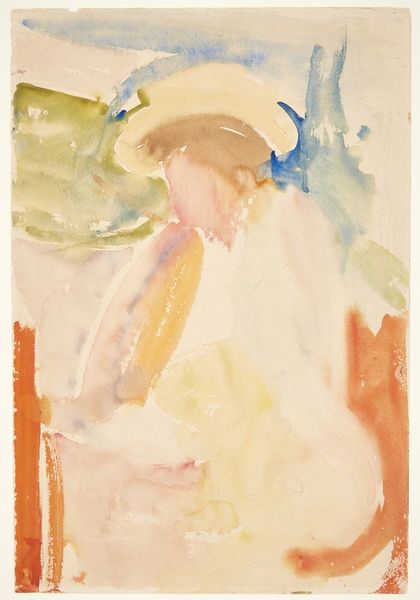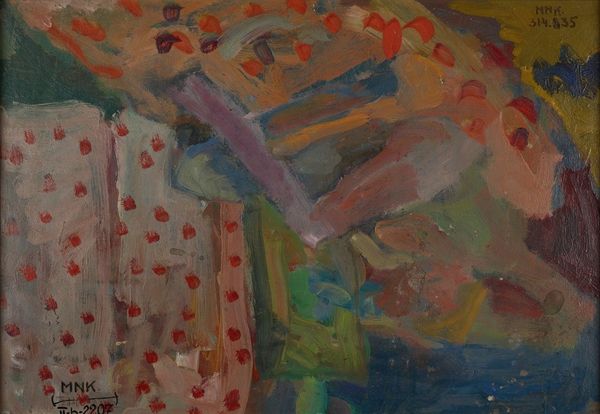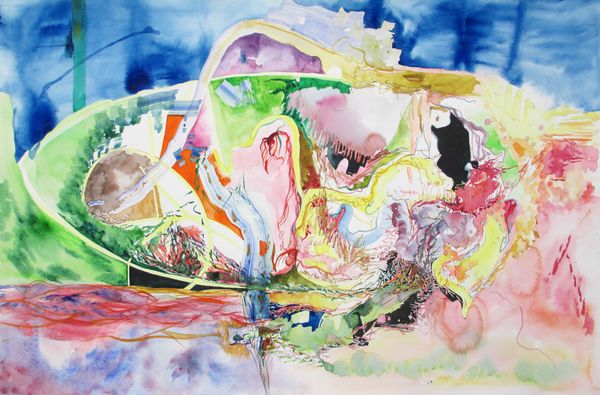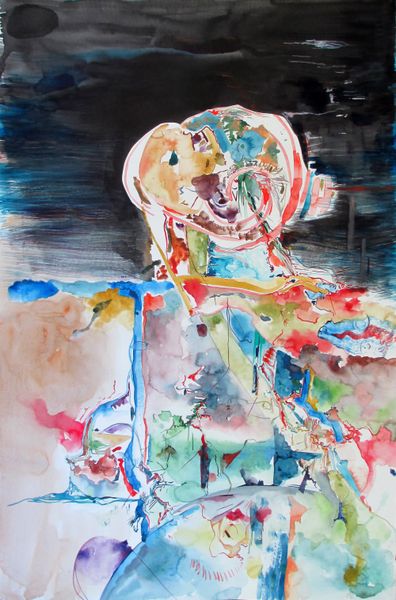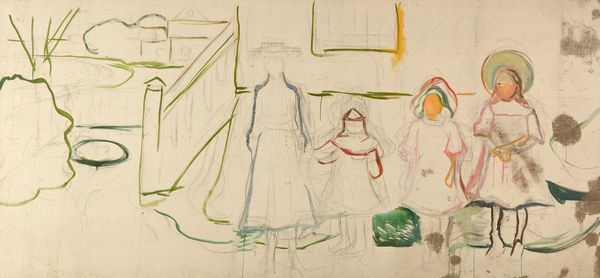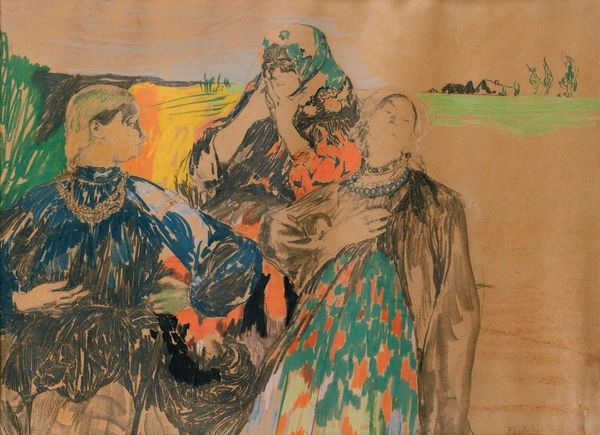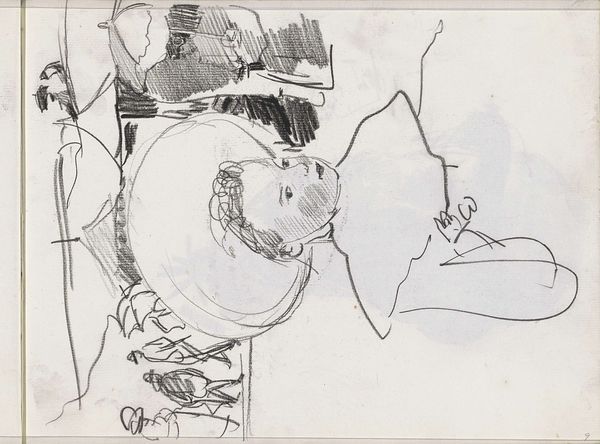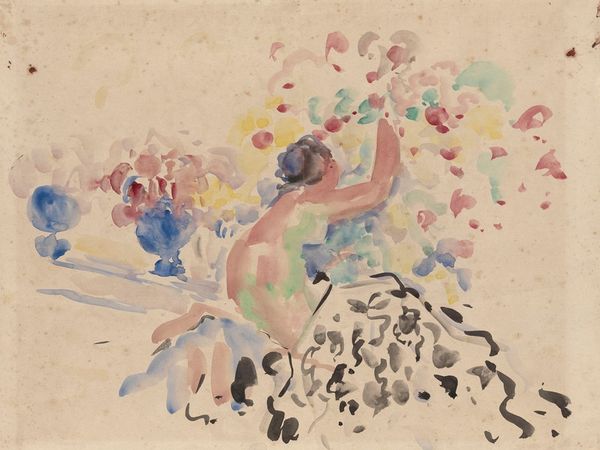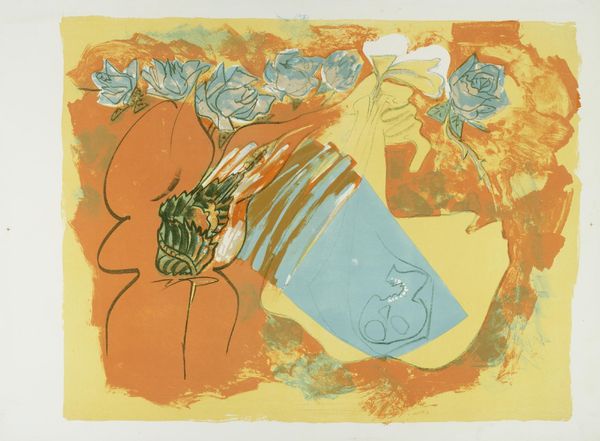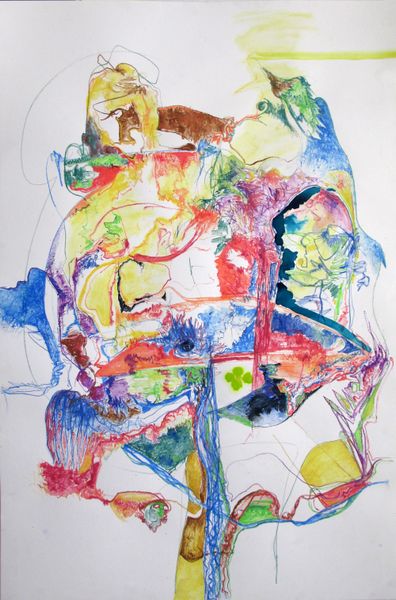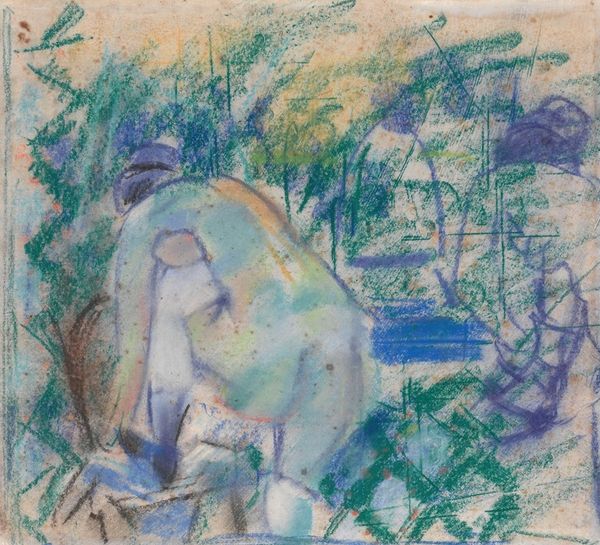
drawing, coloured-pencil, watercolor
#
portrait
#
drawing
#
coloured-pencil
#
impressionism
#
figuration
#
form
#
watercolor
#
coloured pencil
#
line
#
symbolism
#
watercolor
Copyright: Public Domain: Artvee
Curator: What a serene drawing. "Profils de Hollandaises"—Profiles of Dutch Women—by Odilon Redon, seems like it might be from the late 19th century. It's made with watercolor and colored pencil. What are your immediate thoughts? Editor: It’s striking how contemplative they appear. All those downcast gazes feel heavy, almost burdened. I wonder what socio-economic conditions might have influenced Redon’s portrayal. Curator: Yes, their lowered eyes and the soft, muted colors give it a dreamy, introspective feel. It reminds me of early Renaissance portraiture where the profile held symbolic weight connected to modesty. The caps the women wear draw immediate attention. The caps speak to regional identity, obviously, but the pattern work in color is evocative too. It feels spiritual. Editor: I think we need to also see those head coverings through the lens of class and labor. What did it mean to perform that kind of work, how did women negotiate those gendered constraints through clothing? Redon chooses to leave out context clues, and the decision can imply erasure. Curator: I can see your point, particularly in how Redon seems to focus on an internal, perhaps even universal experience. But perhaps their individuality, while obscured by their social standing, can be discovered within the intricate patterns and the variations in color. These are portraits of Hollandaise but, with their profiles and caps, they point toward collective experiences too, shared cultural identities that transcend time and space. Editor: Right, the repetition becomes a kind of visual echo. We have a sense of individuality blended with shared cultural markers, particularly when you read the watercolor like an unfinished story—all these ghosted subjects emerging. This composition invites a conversation around female representation and agency. Are we looking at individual women or the homogenization of a particular identity? Curator: Interesting question, for Redon, a symbolist, it would be about the feeling, about suggesting rather than prescribing a concrete narrative. It is interesting to imagine him capturing not only the appearance of these women but also the collective spirit of the Dutch women. Editor: True. Art always operates within a dialogue between artist, subject, and audience. That he calls attention to types but with very human feeling opens up many doors. Curator: Well said. A lovely and intricate work, ripe for multifaceted interpretation. Editor: Absolutely. And it reminds us that images of the past speak volumes to our present.
Comments
No comments
Be the first to comment and join the conversation on the ultimate creative platform.
